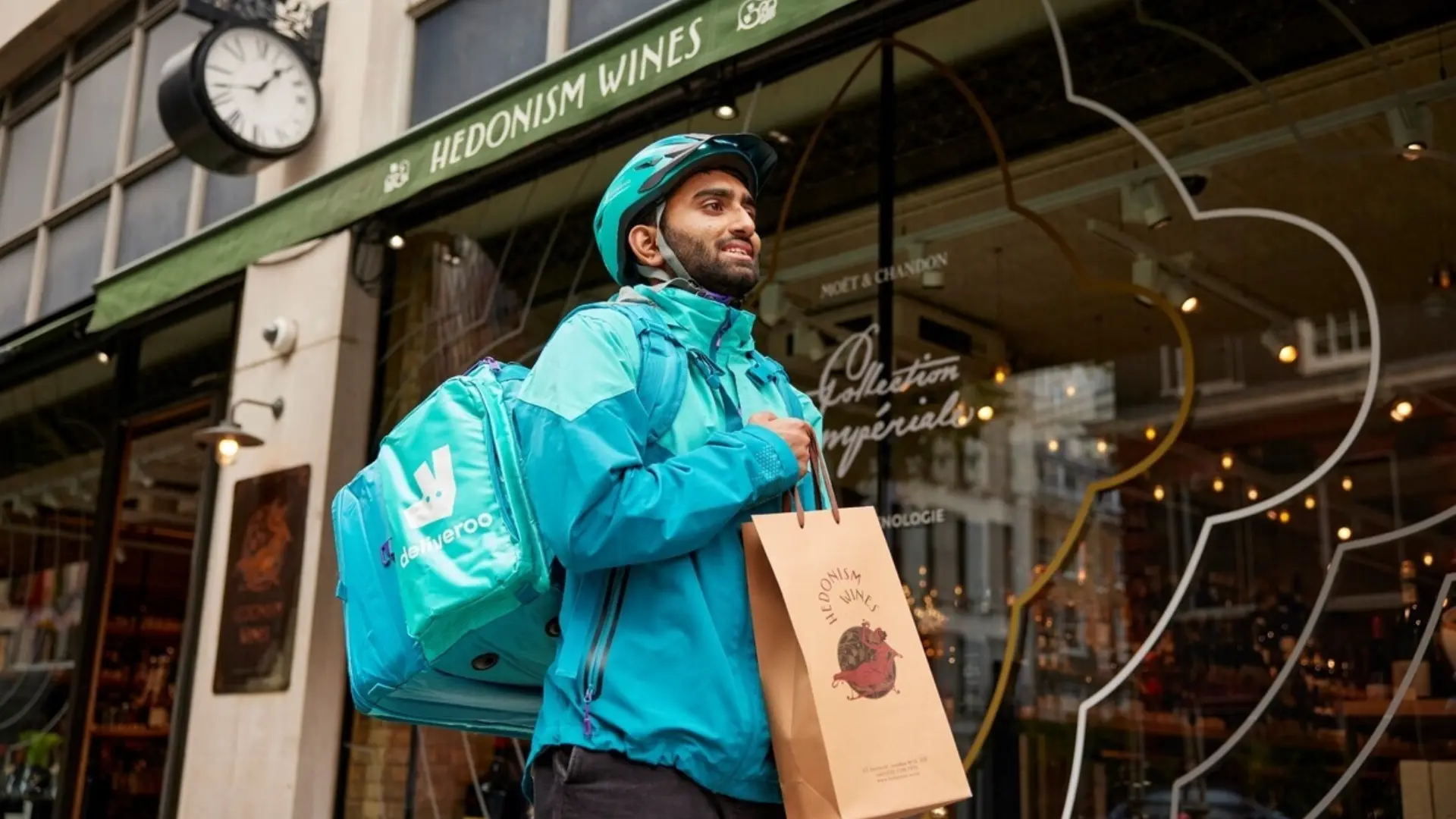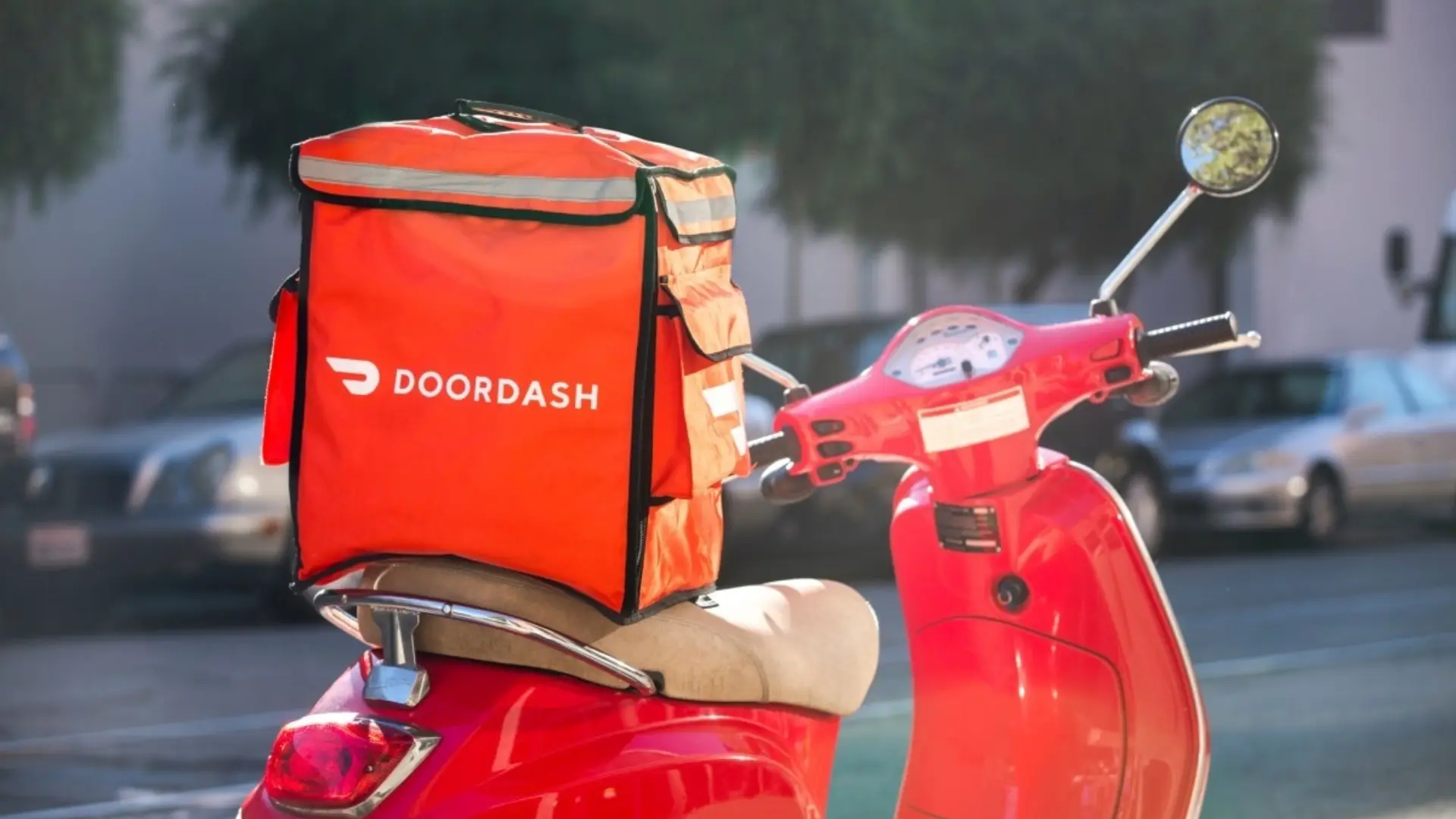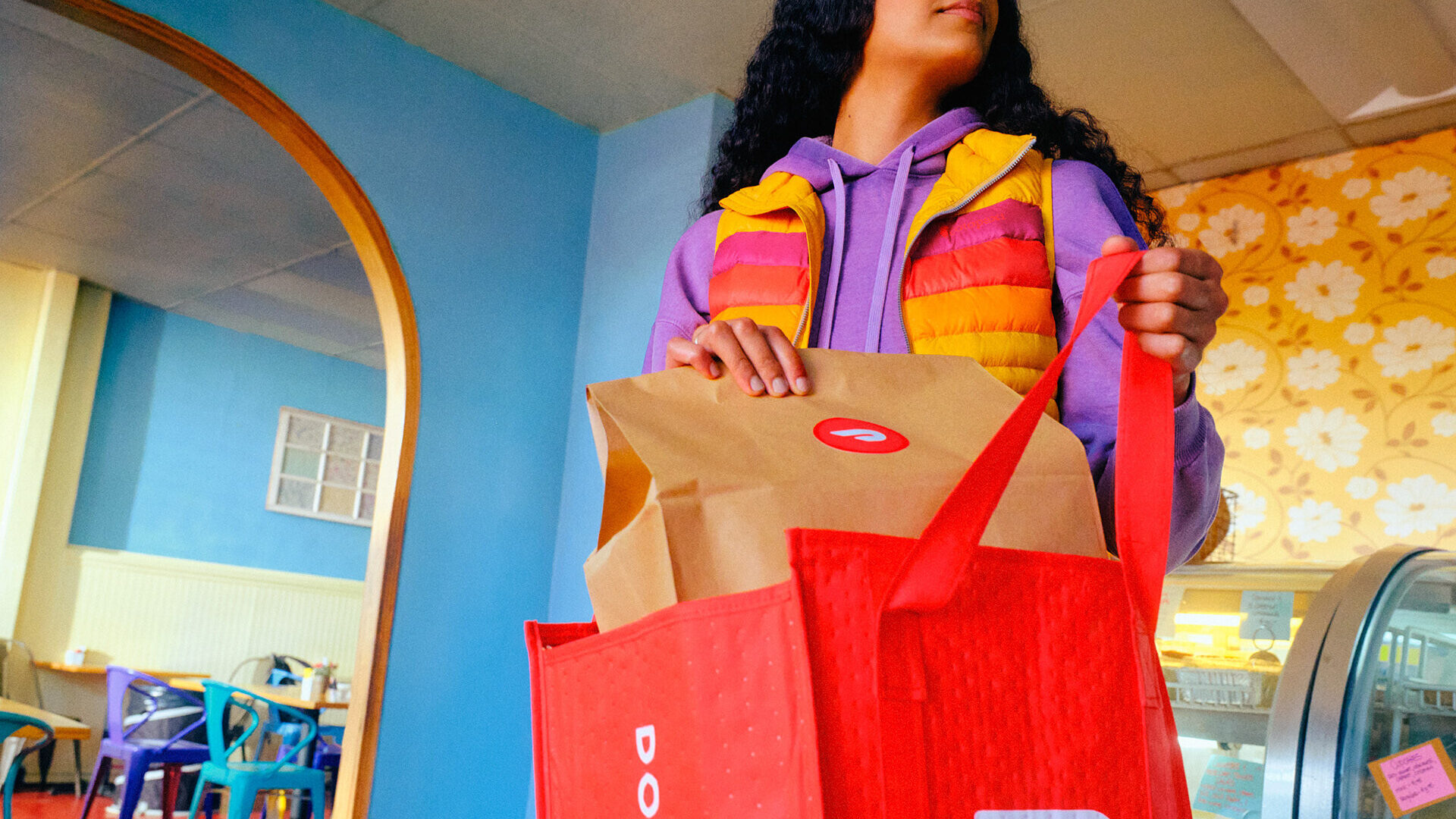We pulled apart our campaign data across markets globally and the very latest category data and rebuilt it into a practical growth system founders and Chief Marketing Officers can use to dominate. Memberships, multi‑homing, and local frequency loops beat channel arbitrage. Here is exactly how we run it.
TL;DR
- Mobile is bigger and faster again. 2024 set new highs for mobile spend and time, and 2025 opened strong. Treat mobile as the primary customer operating system, not a channel.
- Consolidation changes the game. DoorDash now owns Deliveroo, Uber is stitching delivery and mobility across new partnerships and markets. Local moats are forming and the cost of standing still just went up.
- Membership is the retention engine. Uber One crossed roughly 30 million members; DashPass and Wolt+ ran past 20 million in 2024. Build your own membership or bolt onto theirs to lift frequency and lower churn.
- Multi‑homing is the norm. Users shop across apps; your job is to win the next order, not the mythical exclusive. Local differentiation, reliability, and perks outperform broad brand ads.
- Creative beats targeting. ATT constraints and platform privacy shifts mean the performance budget follows iterative creative systems and incrementality testing, not audience hacks.
- The new growth loop is cross‑category. Rides to food, food to grocery, grocery to retail, all under one membership. Design event schemas and messaging to push the next category action.
- Unit economics come first. With marketplace margins thin, you earn your payback via frequency, attachment and contribution, not CPM tricks. We show the maths and the exact tests we run to move it.
- Everything below follows our Founder’s Deep‑Dive methodology and Quant Edition playbook, the way we run operator‑grade growth for clients week in, week out.

Context and Stakes
Mobile just had its best year since 2021. Consumers spent about 4.2 trillion hours on apps in 2024 and pushed in‑app spend to around 150 billion dollars for the first time; Q1 2025 came out of the blocks with an estimated 40 billion dollars of IAP across iOS and Google Play. That macro isn’t a vanity stat. It signals the customer’s centre of gravity has moved, for good, into the phone. If you operate delivery or mobility, your app is the product, the shelf, the checkout, the CRM, and the ad network.
On top of that, the market structure is tightening. DoorDash’s acquisition of Deliveroo gives it immediate depth across the UK and Europe; Uber is extending the mesh with partnerships and new country entries, including Brazil tie‑ups and a controlling stake deal in Turkey’s Trendyol Go. Automation is entering the last mile via sidewalk robots and drones. Each of these raises the bar on reliability and selection, which are precisely the variables users notice at order time.
Regionally, the category is uneven. MENA is Delivery Hero country via Talabat and HungerStation; LatAm consolidated around iFood and PedidosYa after Uber Eats exited large markets; Europe saw download softness as cost‑of‑living bit. Translation: your market entry and spend cadence must be country‑specific, not copied from San Francisco.
Treat 2025 as a consolidation year. Spend behind reliability, membership, and local loops that your rivals cannot easily copy.

The Strategic Bet
Our core bet is simple. In mature delivery and rideshare categories, the winners are not those who spend the most on performance ads; they are those who build a local frequency loop tied to a membership, then use cross‑category nudges to compound orders. Membership turns a low‑margin, auction‑exposed business into a recurring‑revenue engine with predictable re‑order cadence. Uber One and DashPass provide the proof at scale.
Why it is non‑obvious: Many teams still chase net‑new installs or city launches as the growth unlock. We’ve found the real unlock is increasing orders per MAU at city level via habit design, then lowering CAC with membership‑driven payback.
Anchor the plan on membership and cross‑category frequency, not vanity new‑user volume.
Go‑to‑Market Architecture
ICP and Jobs:
- Weeknight family meal sorters, under time pressure, price sensitive, big basket, crave reliability.
- Office teams, group orders on a schedule; value live ETA accuracy.
- Nightlife and travel segments, care about late‑night reliability and safe drop‑offs.
- Busy professionals, low friction, high membership affinity, high cross‑category propensity.
Positioning and messaging: the promise is simple, local and specific: faster, more reliable, and better value here in Manchester, Hackney, or Lisbon tonight. Tie that to a membership value stack users can feel every week.
Offer and proof:
- Cold start: first order guarantee and on‑time credit.
- Warm start: 30‑day membership trial plus loyalty perks for next category action, e.g., “ride credit after your third grocery order”.
Channel to funnel mapping: upper funnel builds distinctive memory; mid‑funnel drives membership trial; lower funnel wins the next order with localised creative and inventory‑aware offers.
Write one line your city team can say at the door of a restaurant partner and customers will repeat to a friend. Then price and prove it.
Acquisition Playbook
Channel mix and budget pattern:
- Apple Search Ads and Google App Campaigns for high‑intent terms and brand defence.
- Paid social for creative‑led prospecting and membership trial.
- Influencer and local content for neighbourhood trust.
- Affiliates and card‑linked offers for measurable new‑to‑category demand.
- OOH proximate to nightlife corridors, transit, stadiums, with QR and vanity search prompts that you can read in post‑OOH brand search lift.
Testing cadence: seven‑day creative sprints, fortnightly landing improvements, four‑week incrementality reads via geo‑holdouts.
Example ad angles we ship:
- “The weeknight that won’t go sideways”, reliability plus a punctuality guarantee.
- “Your last bus home is now a ride”, rideshare safety and ETA-level trust.
- “Groceries in 20, dinner in 10”, cross‑category in one membership.
- “The locals know”, UGC from each neighbourhood, real restaurants and drivers.
- “Members eat for less”, transparent value framing that passes the pub test.
DoorDash, Instacart, and Uber Eats led across the US heading into 2025. Expect CPAs to spike in those markets around tentpoles unless you pre‑book creative and budget.
Make creative the variable, not the audience. Rotate six to eight angles, measure incrementality, and bankroll the winners.
Creative System
We run a creative factory with three pillars:
- Hooks: speed, certainty, savings, and something local.
- Formats: thumb‑stopping UGC, live ETA visualisations, receipt‑style savings, and membership stacks.
- Audiences: neighbourhood clusters, late‑night cohorts, office hubs, and families.
Creative testing matrix
Hooks x Formats x Audiences x Offers, tracked with weekly win‑rate. We focus on post‑view engagement, add‑to‑basket, first order rate, and 30‑day second order.
Iteration loop: launch 20 variants, cut to 25 percent by day 3, brief 10 new derivatives by day 5, scale by day 7.
The best performing ads are filmed within one mile of your top 50 merchants and stitched to membership value.
Conversion Engine
Landing and CRO: keep city and category in the header at all times. Surface membership savings on the listing page, not just checkout. Add an on‑time credit badge.
Onboarding: two‑path flow: fast track for order now, and explore for membership trial. Do not bury payment. Show two recent orders by locals to set basket heuristics.
Pricing and packaging: expose the membership saving in cash and time, not percentages. Keep trials generous but cancellation clean; regulators are very focused on dark‑patterned subscriptions.
If a user understands the membership saving by the second screen and believes their order is reliable, you will win the next order.
Retention and Monetisation
Membership is the engine. Uber One was around 30 million members globally as of early 2025; DoorDash flagged tens of millions across DashPass and Wolt+. Members spend more frequently and across more categories. Design your lifecycle to earn the second and third order within 30 days, then land the membership.
Lifecycle flow we deploy:
- Day 0: order confirmation with next‑order credit if within seven days.
- Day 3: new‑merchant discovery near the last drop‑off.
- Day 7: membership trial nudge based on category.
- Day 14: cross‑category nudge tied to the last basket.
- Day 28: value recap email with real savings and on‑time record.
Retention is a calendar exercise. Put the second and third orders on the calendar in week one.
Growth Loops and Flywheels
Cross‑category loop: rides to food, food to grocery, grocery to retail, and back to rides. The loop is stronger when coupled to membership, partnerships, and local selection. Recent market moves only strengthen this: Uber’s Brazil partnership with iFood integrates services; DoorDash plus Deliveroo expands the European selection footprint; autonomy pilots like Serve Robotics reduce friction and raise reliability in dense cores.
Referral loop: localised merchant offers with hard caps and deep linking. Reward on first repeat order to avoid low‑quality referrals.
Content loop: programmatic local pages that feature real merchants, drivers, and on‑time stats.
Invest where loops feed each other: membership perks that unlock a cross‑category action inside seven days.

Data and Measurement
Data and Measurement
Event schema essentials:
user_signed_up (user_id, city_id, source, campaign_id, ts)app_opened (user_id, ts)viewed_listing (user_id, city_id, category, ts)added_to_basket (user_id, merchant_id, items, est_delivery_time, ts)order_submitted (user_id, merchant_id, eta, fee_breakdown, ts)order_delivered (user_id, actual_delivery_time, on_time_flag, ts)membership_started (user_id, plan, trial_flag, ts)membership_canceled (user_id, reason, ts)cross_category_nudge_sent (user_id, from_category, to_category, ts)
Attribution:
- Use geo‑holdouts and budget splits to measure incrementality by channel.
- Keep simple last‑touch for day‑to‑day steering, but make decisions off holdout lift.
Cohort analysis:
- Track D30, D90, and D180 survival.
- Break down orders per survivor and membership attach by cohort month.
If you cannot answer whether membership drove incremental orders in the holdout cities, you are not ready to scale spend.
Unit Economics and Funnel Maths
Definitions:
- CAC = Sales and Marketing spend divided by new customers.
- Payback months = CAC divided by monthly contribution margin per active.
- LTV simple = ARPU times Gross Margin divided by monthly churn.
Here's an example (with explicit assumptions)
Assume a food delivery business in a mature city:
- Basket incl. fees: 23.00
- Take rate net of promos and refunds: 15 percent
- Variable fulfilment and support costs: 11 percent of basket
- Gross margin on order: 4 percent of basket
- Orders per active per month: 2.2
- Monthly churn without membership: 18 percent
- With membership attached: churn 8 percent; membership fee net after perks: 2.00 per month
- CAC: 28.00 on blended mix
Step 1. Contribution per order = 23.00 times 4 percent = 0.92
Step 2. Monthly contribution per active without membership = 0.92 times 2.2 = 2.02
Step 3. Payback without membership = 28.00 divided by 2.02 = 13.86 months
Step 4. Monthly contribution with membership = 2.02 plus 2.00 = 4.02
Step 5. Payback with membership = 28.00 divided by 4.02 = 6.96 months
LTV simple without membership
ARPU per month approx equals 23.00 times 15 percent times 2.2 = 7.59
Gross margin approx equals 7.59 minus variable fulfilment portion 23.00 times 11 percent times 2.2 = 7.59 minus 5.57 = 2.02
Monthly churn equals 18 percent
LTV equals 2.02 divided by 0.18 = 11.22
LTV simple with membership
Margin per month equals 2.02 plus 2.00 = 4.02
Churn equals 8 percent
LTV equals 4.02 divided by 0.08 = 50.25
Membership transforms a 12 month payback problem into a sub‑7 month payback with over 4 times the LTV, even on conservative take‑rate and cost assumptions. Your job is to increase orders per active and membership attach to move these.
Publish the maths. Teams work better when the LTV, CAC, and payback are visible, updated weekly, and owned city by city.
Benchmarks and Cohorts
The table below uses anonymised ranges based on our blended programmes in the US and UK across 2024 to 2025. They are indicative for planning and not company filings. We include a peer median to ground expectations.
Peer Benchmarks
| Metric | Company A Food Delivery | Company B Rideshare | Company C Food Delivery | Peer Median | Δ vs Median |
|---|---|---|---|---|---|
| CAC | 22 to 38 | 18 to 32 | 28 to 45 | 30 | Company A minus 8 to plus 8 |
| Payback months | 5 to 9 | 3 to 7 | 7 to 12 | 7 | Company B minus 4 to plus 0 |
| LTV:CAC | 2.5 to 4.5 | 3.0 to 6.0 | 2.0 to 3.5 | 3.0 | Company C minus 1.0 to plus 0.5 |
| ARPU per month | 6 to 11 | 7 to 13 | 5 to 10 | 8 | Company B plus 1 to plus 5 |
| D30 retention | 32 to 45 percent | 38 to 52 percent | 28 to 40 percent | 36 percent | A plus 4 to plus 9 pts |
| D90 retention | 18 to 30 percent | 22 to 35 percent | 15 to 26 percent | 22 percent | B plus 0 to plus 13 pts |
| D180 retention | 12 to 22 percent | 15 to 25 percent | 10 to 19 percent | 16 percent | A minus 4 to plus 6 pts |
| Activation or primary account rate | 24 to 40 percent | 30 to 45 percent | 22 to 38 percent | 30 percent | A plus 0 to plus 10 pts |
| Key usage per MAU | 1.7 to 3.0 orders | 2.5 to 5.0 trips | 1.5 to 2.6 orders | 2.2 | B plus 0.3 to plus 2.8 |
Cohorts and Attach Rates
| Cohort Month | Users | D30 percent | D90 percent | D180 percent | ARPU at D90 | Membership Attach percent | Feature Attach percent | Usage per Active |
|---|---|---|---|---|---|---|---|---|
| 2025 Jan | 40,000 | 38 | 24 | 17 | 8.20 | 27 | 19 | 2.3 |
| 2025 Feb | 44,000 | 36 | 23 | 16 | 7.90 | 25 | 18 | 2.2 |
| 2025 Mar | 52,000 | 35 | 22 | 15 | 7.70 | 23 | 17 | 2.1 |
Attribution Snapshot
| Method | CAC | Incremental Lift | Top Channel by MER | Notes |
|---|---|---|---|---|
| Last touch | 26 | n.a. | Paid Social | Steering only; over‑credits view‑through |
| MTA | 31 | 16 percent | Search | Requires high‑quality event stream |
| Geo holdout | 34 | 22 percent | ASA | We use this for investment decisions |
Track attach rates by cohort. If membership attach is stuck under 25 percent by D30, it is an onboarding problem, not a budget problem.
Scenario and Sensitivity
Scenarios
- Base: 2.2 orders per MAU per month, membership attach 25 percent, payback 7 months.
- Bull: 2.6 orders, attach 35 percent, payback 5.5 months.
- Bear: 1.9 orders, attach 18 percent, payback 9.5 months.
Tornado view of LTV drivers
| Driver | Low | Base | High | Impact on LTV | Levers to Move |
|---|---|---|---|---|---|
| Orders per MAU | 1.9 | 2.2 | 2.6 | Very high | Merchant selection, ETAs, surge relief |
| Membership attach | 18 percent | 25 percent | 35 percent | Very high | Upsell timing, trial value, perks |
| Take rate net | 13 percent | 15 percent | 16 percent | Medium | Pricing tests, promo discipline |
| Variable cost | 12 percent | 11 percent | 10 percent | Medium | Routing, batching, support tooling |
| Churn | 20 percent | 18 percent | 14 percent | High | Service reliability, membership stickiness |
Your top two LTV levers are orders per MAU and membership attach. Everything else is rounding unless you are wildly off on costs.
Regulatory and Risk Register
- Subscription dark patterns: active enforcement. Keep sign‑up and cancellation straightforward and honest.
- Labour classification and fee caps: monitor UK and EU policy, plus US city fee caps; model margin sensitivity by city.
- Market consolidation: DoorDash and Deliveroo now one; expect brand migrations and partner renegotiations. Build contingency plans for partner concentration.
- Automation and safety: robot and drone pilots raise expectations and PR scrutiny; prepare incident comms and insurance reviews.
Make an explicit compliance lane in your roadmap. Growth that breaks trust is growth you give back.
Investor Narrative Map
Translate the work into S‑1 style KPIs: MAU, orders per MAU, membership attach, contribution margin, payback, and marketing efficiency ratio.
Tie every campaign to changes in these numbers. Use platform context to frame headroom: mobile time and spend are still expanding.
Narratives that index on frequency and attach, not installs, command better multiples.
Ops and Teaming
- Rhythm: weekly growth review, fortnightly creative retro, monthly city‑by‑city LTV pack.
- Roles: Growth lead, Creative lead, Lifecycle, Data and Experimentation, City Ops.
- Agency vs in‑house: Growthcurve run the system and build your bench; once your internal team can ship the cadence, we swap to strategy, pure customer acquisition campaigns and special projects.
Growth is an operating cadence. Protect the calendar.
Putting This Into Action
After 9 years growing superapps the pattern is familiar...
Markets mature, arbitrage closes, and the boring work wins: reliability, local trust, and a membership that feels fair.
In 2025, with consolidation accelerating and privacy biting, being the team that can ship a dependable service in one postcode after another is the advantage.
Pick one city and one cohort, make them love you, then copy the system.
Use Our Learnings Step by Step
- Publish the maths: share CAC, payback, and LTV across teams.
- Ship membership first: 30‑day trial, clear savings framing, clean cancellation.
- Build the creative factory: eight angles, weekly sprints, hard cuts.
- Instrument the loop: events for cross‑category nudges; track second and third orders.
- Run geo holdouts: set one region aside for incrementality every month.
- Localise relentlessly: top 50 merchants per city in creative and lifecycle.
- Protect reliability: ETA accuracy, defect rates, and courier supply are the real performance budget.
- Report like an operator: frequency, attach, contribution, payback. Every Friday.
Common Pitfalls and Anti‑Patterns
- Chasing installs instead of orders per MAU. Fix by placing frequency at the top of the review.
- Hiding membership value until checkout. Fix by exposing savings on listing and item pages.
- Over‑targeting under privacy constraints. Fix by creative iteration and holdouts.
- Treating every city the same. Fix by country and city specific plans, guided by regional data.
- Assuming brand leadership equals cheap CAC. Fix by planning around tentpoles and competitive spikes.
What We'd Do Differently Next Time
Start membership experiments earlier, but with cancellation clarity baked in on day one. Add cross‑category nudges to the first order confirmation. And pre‑book creative for the quarter’s competitive spikes, not the week they happen.
Have a mobile app you want to grow?
Book a Discovery Call today, we can't wait to get to work growing your business



































